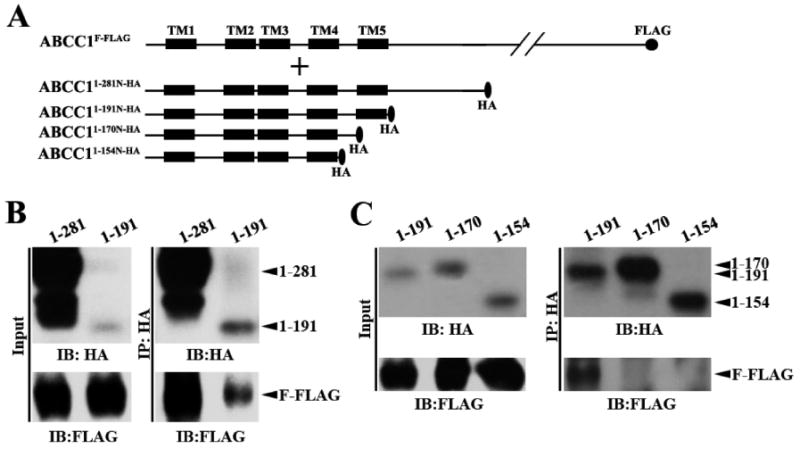Figure 2.

Effect of carboxyl-terminal deletions on dimerization. (A) Schematic diagram of ABCC1F-FLAG and the COOH-terminally truncated ABCC1281N-HA constructs. The TM segments are shown as boxes. The HA and the FLAG tags are shown as an oval and circle, respectively. (B and C) Expression (left) and co-immunoprecipitation (right) of the COOH-terminally truncated ABCC1281N-HA constructs. The COOH-terminally truncated ABCC1281N-HA constructs were transiently transfected into HEK293 cells with stable expression of ABCC1F-FLAG. Forty-eight hours following transfection, cells were harvested and lysed for co-immunoprecipitation using the anti-HA antibody followed by Western blot analysis probed with the anti-FLAG antibody. It is noteworthy that ABCC11–191N-HA appears to have a mobility similar to that of ABCC11–170N-HA, possibly due to the removal of a segment of 21 hydrophobic residues. Similar observations have been made with truncated constructs of ABCG2 in previous studies (27).
